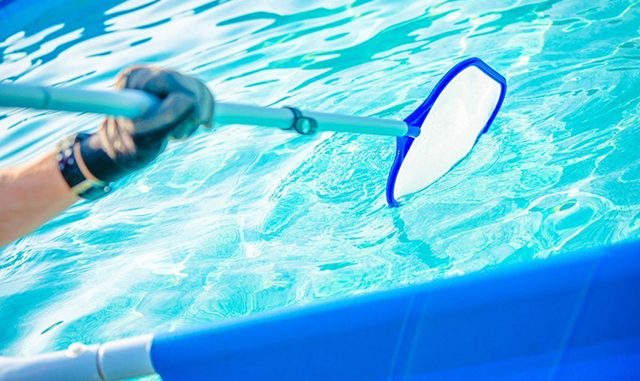
OK, so you’ve installed a backyard swimming pool. You’ve followed the recommended procedures for cleaning it, filling it with water and sanitizing the water. You’ve measured the sanitizer content of the water and it meets all recommended residual levels. It’s time to get in and have some fun. But…are you totally safe from waterborne illnesses? Unfortunately, the answer is “not necessarily!” We specialise in the complete pool removal Sydney and fill of all types of pools, including concrete and fiberglass.
If someone who is already sick gets into your pool, their illness can be unintentionally passed along to anyone else that’s in the water. Think about it. If someone has a cold or flu, or is experiencing diarrhea, or recently entered the pool immediately after using the bathroom without thoroughly cleaning themselves, or urinates or defecates or regurgitates into the pool, whatever illness they may have can be transmitted to anyone else in the water. Remember, no matter how hard you try, it is almost impossible to play or swim in water without getting a little in your mouth.
So what can you do?
You can learn to practice good hygiene before getting into the pool, and make sure that anyone else planning to use the pool does so as well. Here are a few examples of good hygienic practices that you and your family can perform to reduce the risks of getting sick in your pool:
Take a shower using a mild soap.Wash and rinse thoroughly before getting into the pool.
Everyone should wash their hands after using the bathroom but before entering the pool.
Small children in the pool should be given frequent bathroom breaks.
If there are diapered children using the pool, make sure that both the child and the hands of the “diaper changer” are washed before getting back into the water.
Don’t let your friends use the pool if they are currently ill.
Don’t be overly concerned about letting pets into your pool. They “normally” do not carry many diseases that transmit to humans. However, you need to be aware of the issues involved when allowing your pets into the water. To be sure, check with your veterinarian.
Finally, as best as possible, try not to swallow the pool water.
You may say, “I know that most public swimming pools are operated by trained lifeguards and experienced staff. They know how to take care of a pool to prevent swimmers from becoming ill. But I haven’t had their training so how can I make sure that my pool is safe and healthy?”
There are several things that you can do. Follow this routine every time you prepare to go into your swimming pool:
Look at the pool water. It should be clear and you should be able to easily see the pool bottom and main drain (if your pool has one). The water should not have anything unusual floating on the top (such as oil, dirt, foam, dead animals, etc.).
Feel the pool water. If you touch the water, it should feel “normal” and wet. It should not feel greasy, slimy, sticky or gritty with sediment.
Smell the water. If chlorine is used as your sanitizer, you should smell a faint odor of chlorine or no odor at all. If the water gives a strong chemical or musty odor, check the sanitizer level. Chlorine levels are usually expressed in parts per million (ppm). It is normally recommended that the chlorine level in a swimming pool be 1-3 ppm. If your chlorine level is outside of this range either way, you may have to “add” more chlorine. Read the instructions on your chlorine supply container or those that came with your pool regarding the addition of chlorine. (If you do not use chlorine to sanitize your swimming pool, read the instructions that came with the sanitizer that you do use.)
Look for other potential problems. If everything seems o.k. and you enter the water, notice whether or not the water burns your eyes. If it does, then the water’s pH level may need to be adjusted. Most authorities suggest that you keep your pH level within a range of from 7.2 to 7.8. (This is also the range at which chlorine is most effective for swimming pools).
Ultimately, the easiest and best way to keep from getting sick in your swimming pool is to use a little common sense.
Don’t allow people or animals that look dirty to enter your pool.
Don’t let anyone who is sick enter the water.
If someone has a fecal accident in the pool, get everyone out of the water and remove the fecal matter, if formed. Check the sanitizer and pH levels of the water. If all levels are adequate, then it is most likely safe to re-enter the water. However, if the fecal accident involves diarrhea, get everyone out of the pool and “shock” the water. Check with the instructions that came with your sanitizer supply or contact your pool service company for assistance.
Swimming in your backyard pool can and should be a happy, safe and enjoyable experience for you, your family and friends. You can keep it safe and healthy by ensuring that everyone practices good hygiene and that you learn and follow the routines discussed above. If you would like further information on recreational water illnesses, a good source is the Centers for Disease Control and Prevention’s website.
If you would like more discussion on residential swimming pool and hot tub safety, please visit my site, www.poolstuff.info [http://www.poolstuff.info/].
Steve Binns has over 30 years of experience in swimming pool and hot tub safety regulation and enforcement. After learning about the extensive number of children that drown each year in residential swimming pools, he developed a website designed to teach parents how to enjoy their backyard recreation while keeping their children safe from preventable injuries.
Article Source: http://EzineArticles.com/expert/Steve_Binns/1070597
Article Source: http://EzineArticles.com/6348664
